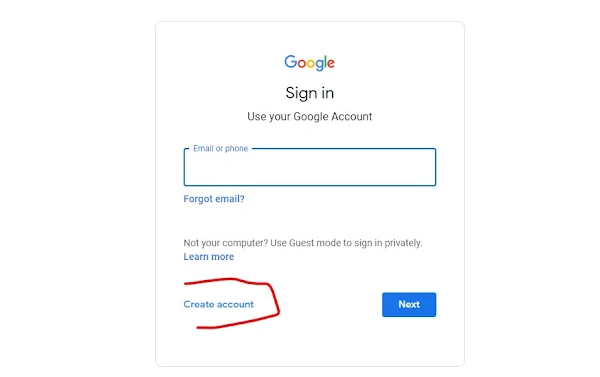Google Fiber DNS: Setup and Configuration
Make your internet faster and more secure with Google Fiber DNS! With no extra cost, you can get access to advanced security features that protect your data from malicious attacks. Plus, our network is built for speed so you can stream content quickly and easily.
Google Fiber is revolutionizing the way we access the internet. With its high-speed, reliable connection and low latency, it’s no wonder why so many people are making the switch to Google Fiber. One of the main benefits that comes with using Google Fiber is their Domain Name System (DNS).

A Comprehensive Guide to Setting Up and Configuring Google Fiber DNS
The DNS acts as a directory for all websites on the internet. It translates domain names into IP addresses which allows your computer to locate and connect to a website quickly and easily. Without this system in place, you would have to manually input server IP address every time you wanted visit a website – not very practical!
Google has taken this one step further by introducing their own proprietary DNS service called “Fiber DNS” specifically designed for users of Google Fiber connections .
This means that when an individual types in www.[website].com , they will be automatically directed towards servers hosted by Google instead of traditional ISPs like Comcast or AT&T .
This ensures faster loading times since data doesn't need travel through multiple networks before reaching its destination; instead it goes straight from user's device directly onto Google's servers where content can be retrieved more quickly than ever before!
Additionally , users who opt-in for fiber DNS also get added security features such as malware protection and phishing prevention which helps keep your devices safe while browsing online - something regular ISP services don't offer ! All these benefits combined make switching over too google fiber worth considering if you're looking for an improved web experience without sacrificing speed or reliability .
What is DNS ?
DNS, or Domain Name System, is a critical component of the internet. It acts as an address book for websites and other online resources, translating domain names into IP addresses so that computers can communicate with each other.
Without DNS servers to convert human-readable domain names into machine-readable IP addresses, it would be impossible to access any website on the internet.
In simple terms, when you type a URL like www.android-setup.com in your browser’s address bar and hit enter – what really happens is that your computer sends out a query asking for the corresponding IP address associated with this domain name from all available DNS servers around the world until one responds successfully with an answer containing this information (IP Address).
The web server hosting example website then receives requests from clients using its own unique numerical identifier - its actual numeric Internet Protocol (IP) address - instead of its more user-friendly textual alias such as “www” or “mail” etc., which makes it easier for computers to identify them quickly over large networks such as those found on today's global communication systems like World Wide Web/Internet & Intranet(s).
In addition to providing users with easy access to their favorite websites by simply typing in memorable URLs rather than numbers; DNS also allows companies running multiple services across different machines spread out geographically or even within their local network infrastructure – email Servers , FTP Servers , Voice Chatting applications etc., to have separate hostnames pointing towards each service without having them conflict amongst themselves due ti duplicate usage of same port number / Ip address .
This helps administrators manage these services much more easily while at same time allowing end users who may not be familiar technicalities involved behind scene still able connect & use these applications without worrying about remembering complex series numbers every time they wish visit certain website/service hosted remotely somewhere else.
Google Fiber DNS Servers
Google Fiber uses its own DNS servers to provide users with reliable and fast internet access. The primary DNS server address for Google Fiber is 8.8.8.8, and the secondary DNS server address is 8.8.4.4. These IP addresses are easy to remember and can be used to configure your device's DNS settings.
Google Fiber is a high-speed internet service provider that offers users the ability to access the web at speeds up to 1,000 Mbps. The company also provides DNS servers for its customers, allowing them to quickly and securely navigate websites and applications with ease.
In this blog post, we'll take a look at what Google DNS servers are all about and how they can benefit your online experience.
Google Fiber's DNS servers are designed specifically for their network of customers in order to provide fast response times when accessing websites or applications on the web.
These specialized name resolution services use algorithms which allow them to process requests faster than traditional Domain Name System (DNS) providers like OpenDNS or Cloudflare’s public resolver system.
This means that you won't have any delays when trying access content from different locations around the world - no matter where you're located!
Another great feature of Google Fiber's DNS service is its enhanced security protocols which help protect against malicious attacks while browsing online as well as other cyber threats such as phishing scams or malware downloads.
With these measures in place, you can rest assured knowing your data will remain safe even if it passes through multiple networks before reaching its destination server(s).
Additionally, since these services run over an encrypted connection there isn't much risk involved with using them either – meaning hackers won't be able to intercept any sensitive information sent via this method either!
Finally - perhaps one of the best features offered by Google fiber’s dedicated name resolution protocol is their commitment towards privacy protection, unlike many other ISPs who often track user activity without consent – google fiber does not collect personal data from those using their services nor do they sell it off third party companies/agencies etc… instead opting only monitor usage patterns anonymously so that better performance metrics & customer support decisions may be made accordingly!
All things considered - investing into google fibers dedicated DNS solution should prove beneficial both now & long term due too increased speed/security benefits along side peace mind knowing ones private info remains secure throughout entire browsing session(s)!
How to Change Google Fiber DNS Settings
Are you looking to change your Google Fiber DNS settings? If so, this blog post is here to help! In this guide, we’ll walk through the steps of changing your Google Fiber DNS settings.
First things first: What are DNS Settings? Domain Name System (DNS) settings control how computers connect and communicate with each other over the internet.
These include IP addresses for websites and email servers as well as mail exchanger records which allow emails sent from one server to another. Changing these can be beneficial if you want more control over how your computer communicates or need access to certain services that might be blocked by default in some areas.
Now let’s get into changing those settings on a Google Fiber network:
1) Login into Your Router
You will need administrator access in order to make changes so make sure you have it before getting started. Once logged in, look for “Advanced Settings” or something similar depending on what type of router you have connected with Google fiber and then click “Internet Protocol Version 4 (IPv4).
2) Change The Primary & Secondary Servers
This is where the actual setting changes, enter primary & secondary server numbers provided by either google itself or a third-party service like OpenDNS/Cloudflare/etc... After entering them correctly hit save at bottom right corner of page once done!
3) Test It Out
To confirm that everything worked properly try visiting a website such as www(dot)(com), if it loads without any issues then congratulations -you've successfully changed your google fiber DNS settings!
Manage DNS settings with the Google Fiber app

You can use the Google Fiber app to customize your network's DNS settings.
To manage your DNS settings:
- launch Fiber app
- click Network .
- click Edit Network Settings
- click Advanced Network Settings
- click DNS
- To customize your DNS settings, tap the Define custom servers switch.
- Enter up to 3 DNS server addresses.
- To enable Dynamic DNS, use the Service Provider menu to choose a service provider.
How To Configure dynamic DNS for Google fiber DNS?
- Sign in to Google Fiber using the email and password you use for your account.
- Select Network at the top-left corner.
- In the settings pane, click Advanced; then click DNS.
Dynamic DNS
The Google Fiber network assigns IP addresses to devices when they connect. These IP addresses are generally unpredictable and subject to change. If you want to host a service such as FTP or SSH on your network, use the DNS advanced settings to set up Dynamic DNS for the hostname, so outside consumers of the service can still access it when your host IP address changes.
How To configure Dynamic DNS?
- Select the name of your Dynamic DNS provider from the Service provider drop-down menu.
- Enter or modify the username for your Dynamic DNS account.
- Enter or modify the password for your Dynamic DNS account.
- Enter the domain or hostname for the service you want to host.
- Click Apply.
We hope this guide has been helpful when trying out
different methods
for switching up those pesky DNS configurations on a google fiber network
-happy surfing everyone!
Common Google Fiber DNS Problems
Like any internet service, Google Fiber DNS can experience occasional problems. Some of the most common issues include slow DNS resolution, DNS cache errors, and DNS server errors. If you experience any of these problems, you can try resetting your DNS settings or contacting Google Fiber customer support for assistance.
Read our other Blog Posts
- How To Use Google assistant
- How To Delete Google Business account
- How To Sign out of Google account on Android
- How To Check Gmail Storage
Google Fiber DNS FAQs
What is the difference between primary and secondary DNS servers?
Primary and secondary DNS servers are used as a backup in case the primary server fails to resolve a domain name. The primary server is used first to resolve the domain name, and if it fails, the secondary server is used.
Can I use a custom DNS server with Google Fiber?
Yes, you can use a custom DNS server with Google Fiber. To change your DNS settings, follow the steps outlined in this article.
How often should I change my DNS settings?
You don't need to change your DNS settings regularly unless you experience issues with your internet connection. However, it's a good idea to check your DNS speed and reliability periodically to ensure optimal performance.
What are some alternative DNS server options to use with Google Fiber?
Some popular alternative DNS server options include OpenDNS, Cloudflare DNS, and Quad9 DNS.
How do I know if my DNS settings are causing internet problems?
If you experience slow internet speeds, connectivity issues, or website loading problems, it's possible that your DNS settings are causing the problem. You can troubleshoot these issues by resetting your DNS settings or using an online DNS speed test tool. If the problem persists, contact Google Fiber customer support for assistance.



